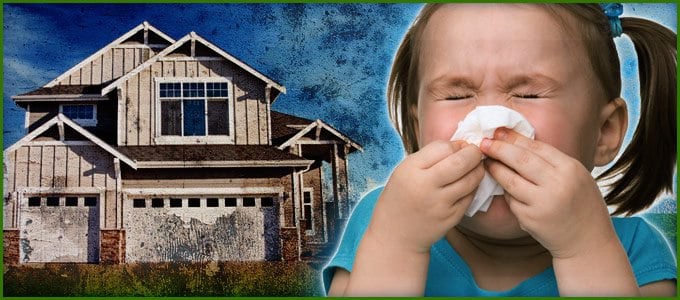Reduce Airborne Allergens and Pollutants from Entering Your Home
injection foam insulation | spray foam insulation | existing home insulation


Have you ever felt like your allergies get worse when you're at home?
Or maybe you've wondered, "Can you be allergic to insulation?" You're not alone -- and the answer might surprise you.
That old fiberglass or cellulose insulation hiding in your walls could be holding onto allergens like dust, pollen, and even pest droppings. Worse yet, it might be helping spread those irritants throughout your home.
At RetroFoam of Michigan, we've helped thousands of homeowners create healthier, more energy-efficient homes -- and it starts with understanding what's hiding in your walls and how foam insulation can make a big difference.
Can You Be Allergic to Airborne Dirt?
Let's start here.
If you've ever walked into a room and suddenly started sneezing or felt your throat tighten, it could be due to airborne particles being kicked up by air moving through your walls.
Traditional insulation like fiberglass and cellulose doesn't block air -- it lets it pass through. That means outside air brings in dust, pollen, and pollutants, which then get trapped in the insulation or blown into your living space.
If you're wondering can you be allergic to airborne dirt or dust in your home, the answer is yes. It can trigger everything from sneezing fits to asthma attacks and even worsen chronic respiratory issues.
When Insulation Becomes a Critter Condo
If the allergens weren't enough, let's talk about something even more unsettling -- pests.
Rodents, bats, squirrels, and insects love traditional insulation. It makes a cozy home for them, but their droppings and urine? That's where the real problem begins.
Rodent waste can trigger allergic reactions, spread bacteria, and even carry diseases. And insulation filled with pest debris isn't just gross -- it's dangerous for your family's health.
Mold and Moisture: The Hidden Threat
Fiberglass insulation isn't just a magnet for allergens -- it's also susceptible to moisture.
Once damp, it becomes the perfect place for mold to grow.
According to the San Francisco Gate, "Airborne mold spores that settle in the fibers of fiberglass insulation thrive when exposed to moisture... Mold can be a source of unhealthy indoor air quality and produce allergic symptoms in susceptible individuals."
And if that mold goes untreated? It can rot the wood in your walls and weaken your home's structure -- not to mention cause serious health problems.
Condensation on windows, gaps in your exterior walls, and humid Michigan summers all contribute to these moisture issues that fiberglass and cellulose simply can't stop.
How to Reduce Indoor Allergens with Foam Insulation
Here's the good news: you can reduce indoor allergens and improve the air you breathe -- starting with your insulation.
Foam insulation, like the kind we install at RetroFoam of Michigan, creates an air seal in your home. That means no more air leaks, no more moisture getting in, and no more dust and pollen riding the air currents through your walls.
It fills every nook and cranny, blocking allergens before they even get inside. You're not just insulating -- you're building a defense system for your family's health.
And if you've ever wondered, "Can you be allergic to insulation?", rest assured: foam insulation is non-toxic and hypoallergenic in that it doesn't trap particles or harbor mold and pests like traditional materials.
Say Goodbye to Allergens -- And Hello to a Healthier Home
No one should feel worse at home than they do outside.
Whether you're dealing with asthma, allergies, or just want cleaner indoor air, upgrading your insulation can make a world of difference.
Ready to kick mold, dust, and pest droppings to the curb?
Check out our Learning Center to discover how foam insulation can help you breathe easier -- and live healthier.
Key Points:
- Yes, you can be allergic to insulation , specifically if it's filled with dust and mold like what happens with old fiberglass and cellulose.
- Airborne dirt and allergens pass right through traditional insulation and circulate through your home.
- Pests love fiberglass and leave behind waste that can make you sick.
- Mold grows easily in moisture-prone insulation, causing respiratory issues and potential structural damage.
- Foam insulation seals your home, blocking allergens, pests, and moisture at the source.
- Insulation allergies can be prevented with safe, clean, foam insulation that doesn't hold onto pollutants.
Related Articles
4 Health Benefits of Removing Old Insulation
8 Things to Do When Identifying Condensation or Mold in Your Home


